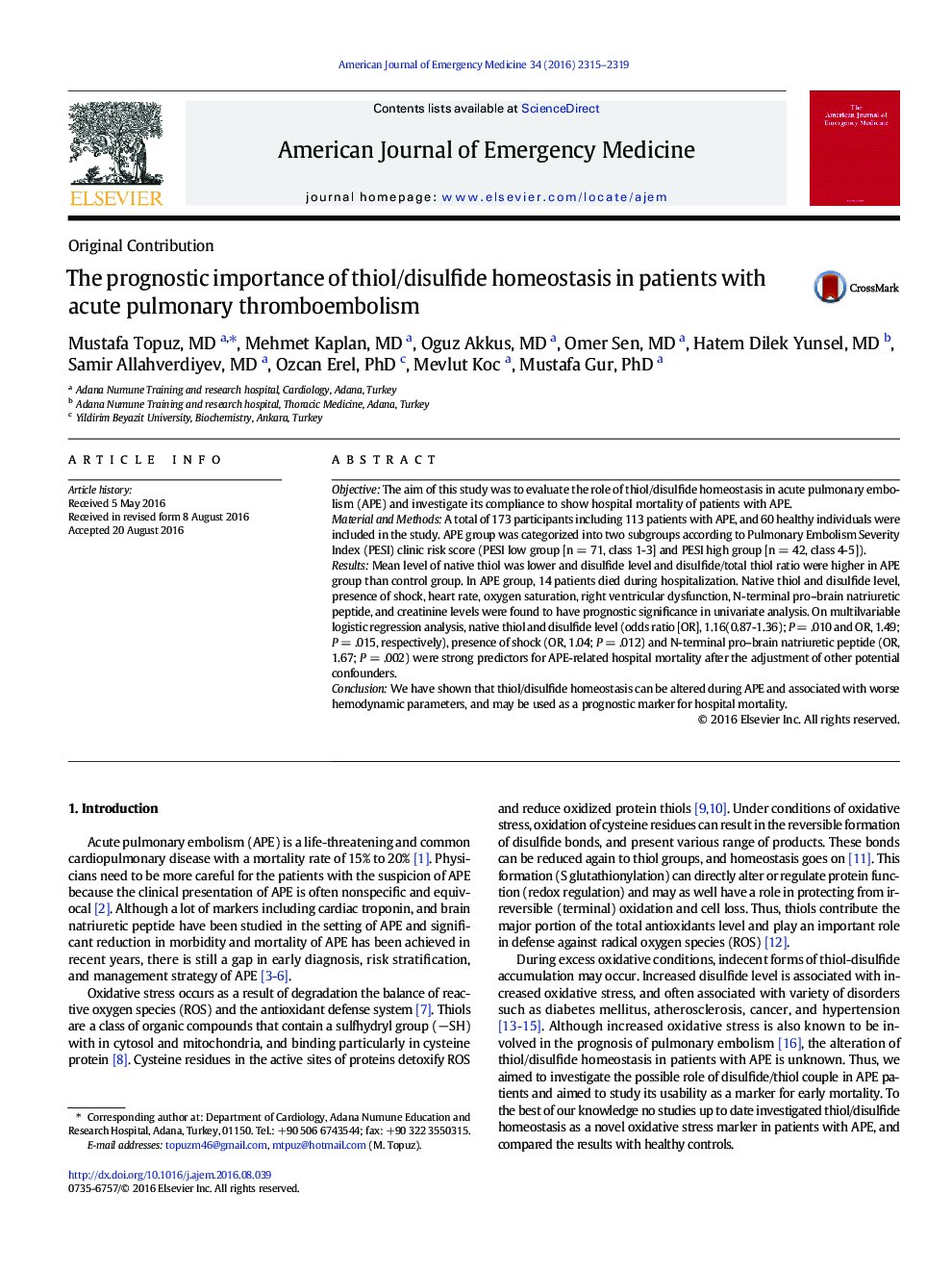| Article ID | Journal | Published Year | Pages | File Type |
|---|---|---|---|---|
| 5651218 | The American Journal of Emergency Medicine | 2016 | 5 Pages |
ObjectiveThe aim of this study was to evaluate the role of thiol/disulfide homeostasis in acute pulmonary embolism (APE) and investigate its compliance to show hospital mortality of patients with APE.Material and MethodsA total of 173 participants including 113 patients with APE, and 60 healthy individuals were included in the study. APE group was categorized into two subgroups according to Pulmonary Embolism Severity Index (PESI) clinic risk score (PESI low group [n = 71, class 1-3] and PESI high group [n = 42, class 4-5]).ResultsMean level of native thiol was lower and disulfide level and disulfide/total thiol ratio were higher in APE group than control group. In APE group, 14 patients died during hospitalization. Native thiol and disulfide level, presence of shock, heart rate, oxygen saturation, right ventricular dysfunction, N-terminal pro-brain natriuretic peptide, and creatinine levels were found to have prognostic significance in univariate analysis. On multilvariable logistic regression analysis, native thiol and disulfide level (odds ratio [OR], 1.16(0.87-1.36); P = .010 and OR, 1.49; P = .015, respectively), presence of shock (OR, 1.04; P = .012) and N-terminal pro-brain natriuretic peptide (OR, 1.67; P = .002) were strong predictors for APE-related hospital mortality after the adjustment of other potential confounders.ConclusionWe have shown that thiol/disulfide homeostasis can be altered during APE and associated with worse hemodynamic parameters, and may be used as a prognostic marker for hospital mortality.
